Finding the front of a bonsai is a great exercise – one of my favorites. Both existing bonsai and newly collected trees make good candidates. The cork bark black pine I’ve been working on for the past 6 years has had the same front for very likely most, if not all, of its life. Here is a photo of the tree from 2004.

Winter – 2004
The tree was very yellow that year as it hadn’t received much water the previos year. That spring, almost all of the needles fell off leaving very little foliage to keep the tree alive. After two significant repottings and several years of attentive care, the tree is back in good health. Which is a good time to consider how it’s styled.
Were I to remove the top quarter of the tree, the bit that protrudes to the right, I’d have a nice ready-made bonsai. Future work would require finding a smaller pot and further developing the existing branches.
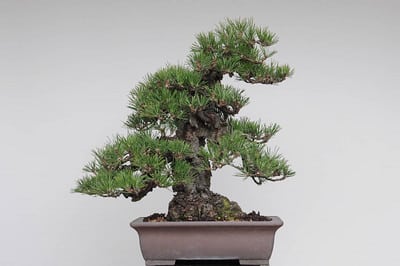
Spring – 2010
I’m not convinced, however, that keeping this front will yield the most interesting bonsai. I’ve long considered how I might take advantage of the top part of the trunk and the best I’ve come up with involves selecting a new front for the tree.
This is tricky for existing bonsai. The branches are well distributed for the existing front and the trunk and root-base currently show well. But when I look at the tree from the right side, the trunk gains movement and character. Of course, when viewed from this side the root base narrows – typically a bonsai no-no – and the branch structure falls apart. Were I to make the switch, I’d have to find a way to work with these deficiencies. Here are several views from the right side.
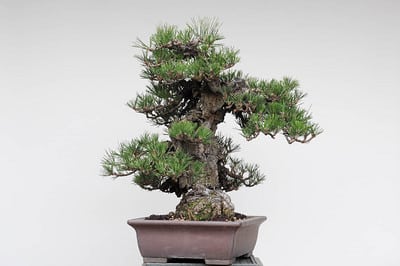
New front #1
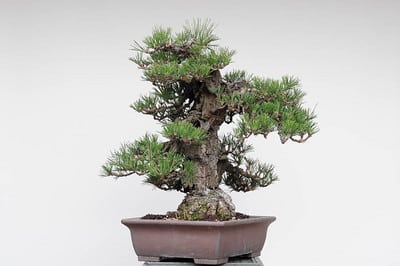
New front #2
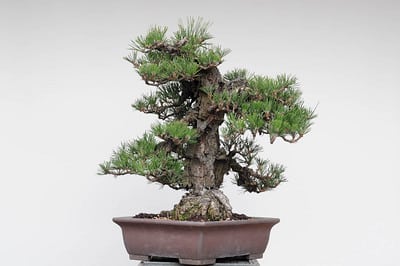
New front #3
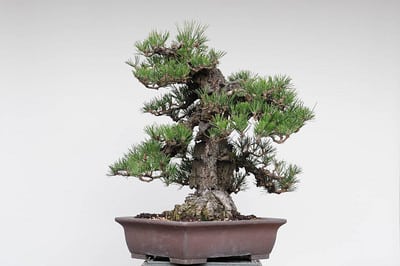
New front #4
It’s not going to be an easy decision. For although I find the possibilities intriguing, they might not yield the effect I’m looking for.
The current front provides a nice, wide root-base and good interest.
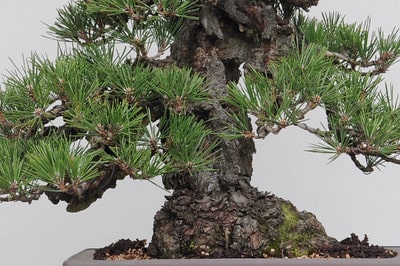
Trunk detail – current front
The new front could provide a slightly wider trunk, at the expense of a much narrower root-base. There is great visibility of the trunk, below and above, but at the expense of poor branch structure.
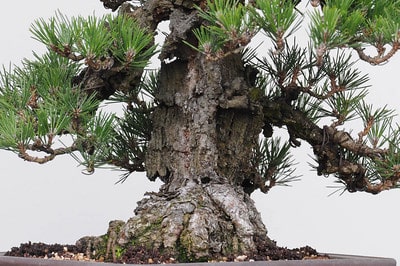
Trunk detail – candidate for new front
The back of the tree offers good view of the trunk and root-base but no branches whatsoever. They can’t all be fronts.
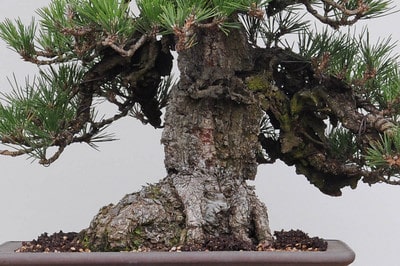
Trunk detail – current back of tree
Subscribe to Bonsai Tonight
New Posts Delivered Every Tuesday and Friday
JT says
Jonas,
I realize that your intention for this page is not “ask the audience” but I have to comment on picture #2. Although I can’t tell from the picture if the first branch would be the back branch, I really like this angle. The base is not as wide as the current angle but still a very nice nebari. The trunk angle is what I like most about this option. There seems to be a very nice movement of the trunk in the upper portions that just seems “right” to me. I like the branch placement of this angle also. A very nice cork bark by the way.
xwires says
Hi JT – No worries, every post is “ask the audience.” I agree with you about #2. Somewhere between 2 & 3 is my favorite candidate for a new front, mostly because I like what the trunk does from this angle. The branches will be a challenge from any of these angles. While I have some good starting points, I won’t be expecting a super-traditional silhouette. And thanks about the tree – it belonged to Mas Imazumi for many years.
Munezo says
Hi Xwires, I’d like to say that I favor picture 2. If that were mine (after learning from Mr B) I would think that the right middle branch would be lightly reduced and wired to be more parallel to the soil line. Then the first branch on the left would be wired to go more to the left. U being Sempai, please let me know what you think of my choices.
xwires says
Hi “Munezo” – I like your suggestions. There needs to be more on the bottom branches and less on the right hand branch – more in the middle as well. The wiring suggestions are good too, but you only have so much leeway when it comes to wiring cork bark pines. Typically the young shoots can be wired but not the older ones. The main branches will pretty much stay where they are – the trick is in developing the new shoots to change the silhouette or adjust the tree’s balance. Thanks!